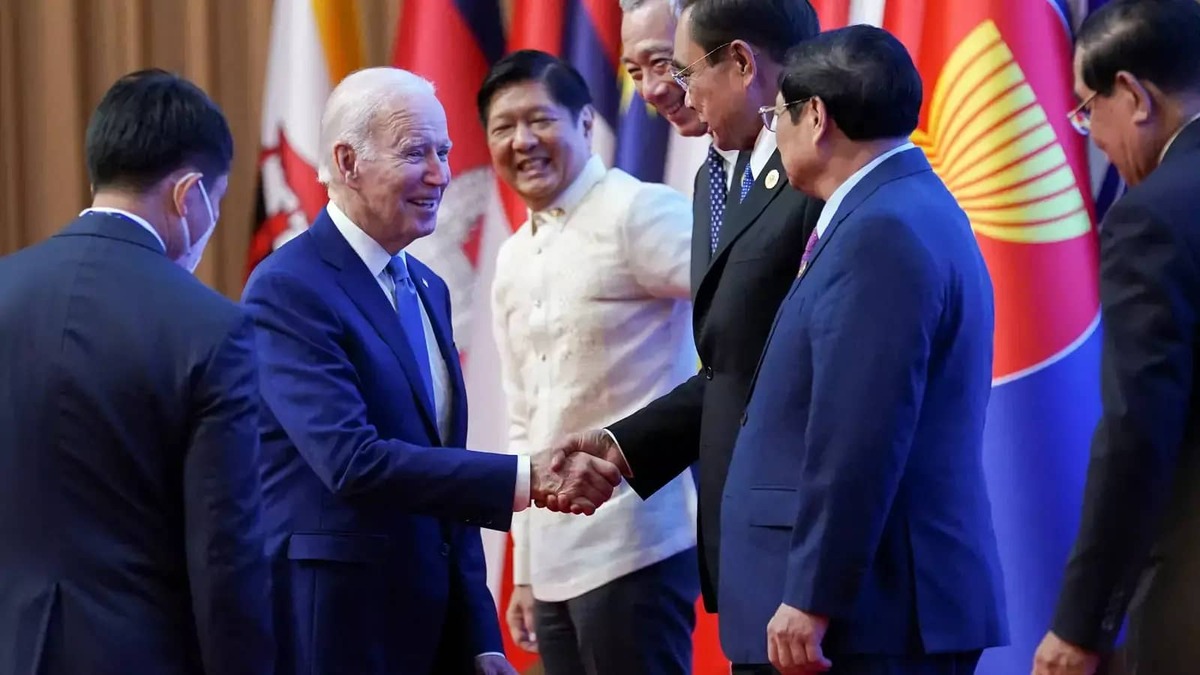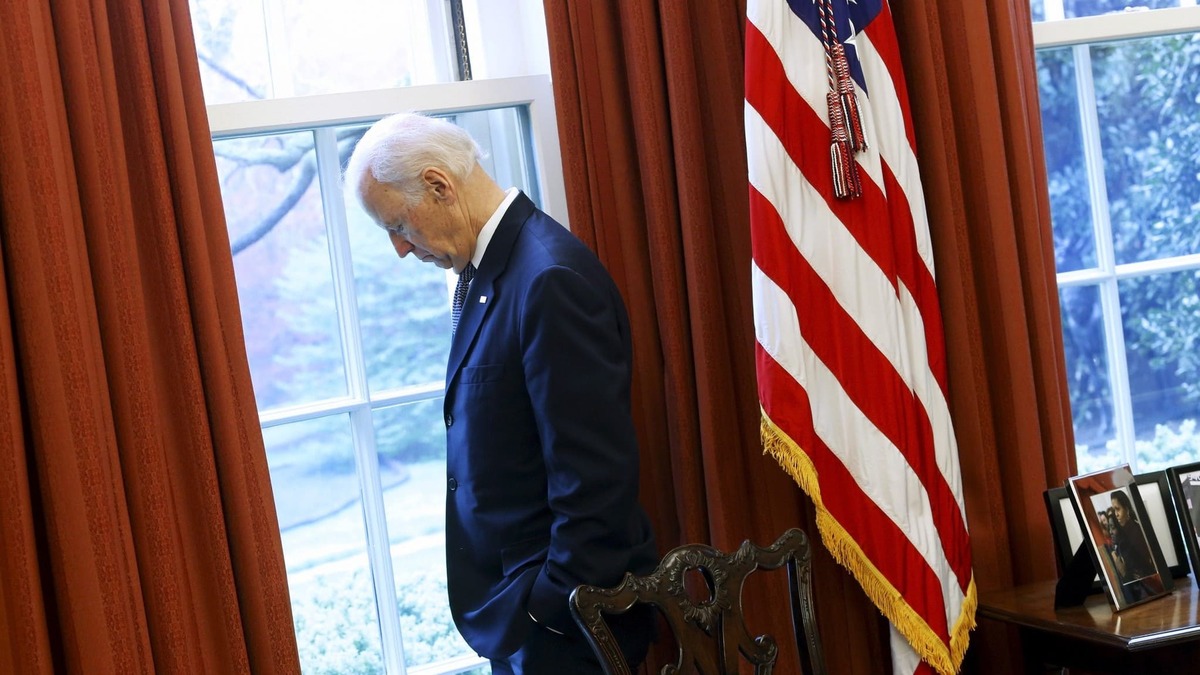Published 03 October 2023
In their efforts to come to terms with intensifying US-China rivalry, Southeast Asian leaders have consistently relayed to their American counterparts variations of the same message. US officials have fed back that these oft-repeated refrains are getting worn. The challenge before both parties now is finding a way forward to cooperate in new domains, despite their mismatch in perceptions about China.
It is probably time that the United States and Southeast Asia shift gears in their strategic conversation. The one they have been having thus far is in danger of being stuck in a rut.
In their efforts to come to terms with intensifying US-China rivalry, Southeast Asian leaders have consistently relayed to their American counterparts variations of the same message along the following lines:
- Do not force Southeast Asia to take sides in the US’ strategic competition with China;
- Do not drag Southeast Asia into a conflict with China over the South China Sea or Taiwan;
- America should not have withdrawn from the Trans-Pacific Partnership (TPP) and should now consider joining a regional free trade agreement (FTA) as this symbolizes an important pillar of engagement with the region;
- the Biden administration’s Indo-Pacific Economic Framework for Prosperity (IPEF) has limited value as it does not facilitate market access;
- the region has anxieties about China’s rise and would welcome deeper US engagement to maintain a balance of power – but Southeast Asia does not consider China the enemy;
- the US’ high-level diplomatic engagements in the region and with ASEAN as an institution have been episodic and uneven, especially when compared to China’s sustained levels of regional engagement.
These messages, in a nutshell, were candidly conveyed again to members of the Asia Society’s Task Force on US-China Policy during a June closed-door gathering in Singapore with Southeast Asian senior academics and former diplomats. As the contents of the ensuing report entitled Prioritizing Southeast Asia in American China Strategy attest, these messages to Uncle Sam have been received loud and clear. Anecdotally, our American interlocutors have fed back that these oft-repeated refrains are getting worn.
For a more productive conversation with the United States, it is perhaps time for Southeast Asia to also internalize what Uncle Sam has been saying for quite some time now. The key messages have been nicely encapsulated in National Security Advisor Jake Sullivan’s speech in April and run along these lines: Firstly, America will adopt a “foreign policy for the middle class” which will see it “unapologetically pursuing” an industrial policy that will benefit its workers.
Secondly, the world should not expect the United States to indiscriminately proffer free trade, lower tariffs, and market access as a matter of principle. Globalization and neo-liberal economics have not worked for Americans and the “world needs an international economic system that works for our wage earners, works for our industries, works for our climate, works for our national security, and works for the world’s poorest and most vulnerable countries.” In essence, according to Sullivan, the United States will be focused on “renewing the compact” between its government and its voters and workers, and pledges that it would “provide space” for its partners around the world to do the same. Where China is concerned, the US seeks to de-risk and diversify, and not decouple. It would adopt a “small yard, high fence” approach to protecting foundational technologies that could “tilt the military balance”. The US intends to “compete with China on multiple fronts; but is not looking for confrontation or conflict.”
These positions translate into some hard truths for Southeast Asian countries.
Firstly, Uncle Sam is likely to become harder to do business with than in the past. As Sullivan has plainly said, domestic politics and imperatives simply do not allow America to be the champion of free trade the region wishes it to be. Statistics show that between 2009 and September 2023, the US topped the list of countries with the highest number of protectionist trade intervention policies, with nearly 9,500 policies implemented. China came in second, with around 6,100 such policies implemented.1
Secondly, America, whether Southeast Asia likes it or not, will remain ideologically driven in its determination to spread its democratic ideals and values. At the very least, it will never profess otherwise in its public diplomacy. “Like-mindedness” is a foreign policy priority for the US, given how often the term is used as a prerequisite for the formation of US-initiated mini-lateral groups such as the Quadrilateral Security Dialogue (Quad), a strategic forum between Australia, India, Japan, and the US. Insofar as the US and its allies continue to define “like-mindedness” on the basis of agreement that the most serious strategic and security threats are posed by a communist and autocratic China, then there is every likelihood that the US would view most Southeast Asian countries as being more in the ‘out group’ than ‘in group’. While most, if not all, countries in Southeast Asia harbor strong reservations and anxieties about China’s rise, probably very few would assess that China poses the same degree of existential threat as is perceived in the US. The sense of frustration over how differently the US and Southeast Asia perceive the China threat was palpable in the Asia Society’s Task Force report which noted that it was remarkable (and worrying) that Southeast Asian governments and experts appear relatively unaware – or unwilling – to acknowledge the pervasiveness of China’s united front, information and disinformation, political influence, and intelligence activities throughout Southeast Asia.2
This mismatch in perceptions about China has serious implications. The question before Southeast Asian leaders is how to convince the US and its allies that there is a way forward to cooperate and engage in important and strategic new domains. As the technological competition between the US and China intensifies, the invocation of national security considerations will increasingly drive trade and investment policies in emerging critical sectors.
Given how quickly dual-use technologies and applications evolve, it is probably reasonable to assume that the “yard” in the “small yard, high fence” approach is unlikely to remain small. As the US imposes onerous investment screening processes and export controls for a potentially elastic list of critical technologies, the question is whether Southeast Asian countries will have the ability to comply and to what extent future trade and investment flows will be negatively impacted. According to the latest Committee on Foreign Investment in the United States (CFIUS) 2022 report, there was a significant increase in the number of investment cases that required mitigation measures (18% of all cases, compared to 10% in 2021). There was also a significant drop in the number of declarations CFIUS cleared – from 73% in 2021, to 58% in 2022.3 The only countries exempt from CFIUS rules are the US’ closest allies Canada, United Kingdom, Australia, and New Zealand – members of the Five Eyes intelligence alliance.
It is in Southeast Asia’s interests to be deemed, if not “like-minded”, then at least trusted enough to be included as nodes in the new supply chain ecosystems for critical technologies. It is important that the region’s leaders break the false narrative that the region is economically under the sway of China and therefore unable to exercise strategic agency and independence. It is also important to urge the US to avoid going down the path of extreme binary thinking, such as advocating for a “hard break”4 with China, and penalizing countries which do not completely side with the US bloc.
As I have noted in a previous piece, while it is true that China has become the largest trading partner for all member states of the Association of Southeast Asian Nations, the US is still a vital export market for ASEAN goods. In 2021, ASEAN’s goods trade surplus with the US was US$145.9 billion, compared to its goods trade deficit with China of US$107.7 billion that same year. In fact, since 2013, trade with the US has consistently generated the largest surpluses for ASEAN among the region’s trading partners.5 On the FDI front, the US’ stock of investments in the region dwarfs China’s by far. According to statistics from the ASEAN Secretariat, the cumulative value of US FDI investment between 2012 and 2021 was US$198.7 billion, compared to US$98.7 billion for China over the same period. However, while the bulk of the US investments in the region are concentrated in Singapore, China’s are more widely spread out across the region, fueling perceptions of China’s outsized influence.
Southeast Asia is far from being economically dominated by China. It is therefore important to impress on the US that the region remains open and welcoming to deeper US engagement. According to data trends from the ISEAS – Yusof Ishak Institute annual State of Southeast Asia Survey, the region in general has expressed a growing preference to align with the US, a clear reflection of the region’s growing anxieties over China’s rise and perceptions of its growing assertiveness. In the SSEA 2020 edition, which posed the question “if ASEAN were forced to align itself with one of the two strategic rivals (the US or China), which should it choose?”, the answers were fairly evenly split – with 50.2% of the ASEAN-wide respondents choosing the US, and 49.8% choosing China. Over the years, the region’s preference to align with the US has steadily strengthened. In 2023, 61.1% of respondents said that ASEAN should align with the US, while just 38.9% chose China.
As for the US, much is riding on its ability to demonstrate how trade, investment, and economic integration functions outside of its intended “small yard, high fence” strategy on China and in the context of its “foreign policy for the middle class”. It was encouraging to see the big business delegation President Joe Biden brought along on his recent state visit to Vietnam, and the significant announcements around deepening economic cooperation6 in the areas of cloud computing, semiconductors, and artificial intelligence. Also to be closely watched will be negotiations on Indonesia’s limited FTA with the US, which will facilitate the export of nickel and other critical commodities used in electric vehicle (EV) production to the US and allow Indonesia’s EV ecosystem to benefit from US tax credits.
These developments are promising signals that the region can work productively and substantively with the US in critical new areas. They also underscore the fact the region remains keen to do business with America and that if Uncle Sam puts viable opportunities on the table, these would be very welcome.
[This article was published on the same day on Fulcrum, an analysis and commentary platform of the ISEAS-Yusof Ishak Institute.]
***
[1] Global Trade Alert (GTA) ID 91204. https://www.statista.com/statistics/912041/top-25-countries-implementing-trade-liberalization-policies-harmful-to-free-trade/
[2] Prioritizing Southeast Asia in American China Policy, asiasociety.org. https://asiasociety.org/sites/default/files/2023-08/Prioritizing%20Southeast%20Asia%20in%20American%20China%20Policy%202.pdf
[3] CFIUS Releases Annual Report for 2022: Drawing Meaning from the Numbers – Publications, morganlewis.com. https://www.morganlewis.com/pubs/2023/08/cfius-releases-annual-report-for-2022-drawing-meaning-from-the-numbers
[4] The Case for a Hard Break With China, Foreign Affairs. https://www.foreignaffairs.com/china/case-for-hard-break-with-beijing-economic-derisking
[5] Southeast Asian Views on the United States: Perceptions Versus Objective Reality, FULCRUM. https://fulcrum.sg/southeast-asian-views-on-the-united-states-perceptions-versus-objective-reality/
[6] US, Vietnam firms talk business during Biden visit; AI and Boeing deals unveiled, Reuters. https://www.reuters.com/markets/us-vietnam-firms-hold-business-summit-during-biden-visit-ai-deals-unveiled-2023-09-11/
© The Hinrich Foundation. See our website Terms and conditions for our copyright and reprint policy. All statements of fact and the views, conclusions and recommendations expressed in this publication are the sole responsibility of the author(s).









